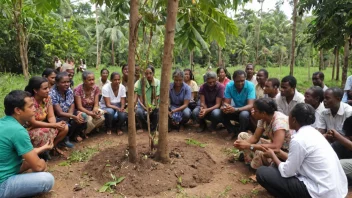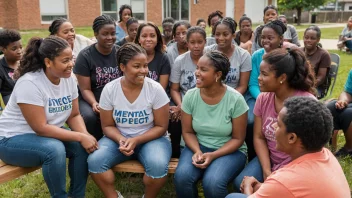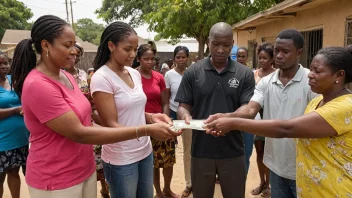Introduction
In a world where gender inequality persists, faith communities play a pivotal role in fostering change. This article provides a comprehensive guide on how these communities can actively promote gender equality. By understanding the impact of faith on social values and community dynamics, we can explore practical steps that can be taken to empower both women and men in their spiritual and everyday lives.
Step 1: Assess the Current Situation
Before implementing any initiatives, it’s crucial for faith communities to assess the current state of gender equality within their congregation and surrounding community.
- Conduct Surveys: Create anonymous surveys to gather information on perceptions of gender roles and equality.
- Hold Focus Groups: Facilitate discussions among members to understand their views and experiences related to gender issues.
- Review Policies: Examine existing church or organizational policies regarding gender roles and leadership.
Step 2: Raise Awareness
Education is key to changing mindsets. Raising awareness about gender equality issues can help foster a more inclusive environment.
- Organize Workshops: Host workshops that discuss gender equality from a faith perspective, emphasizing scriptural teachings that promote equality.
- Invite Guest Speakers: Bring in speakers who specialize in gender studies or social justice to share insights and experiences.
- Create Informational Materials: Develop pamphlets, newsletters, and online content that highlight gender equality issues and encourage discussions.
Step 3: Engage Men and Boys
It’s essential to engage all genders in the conversation and efforts toward gender equality.
- Men’s Groups: Establish groups that focus on men’s roles in promoting gender equality and healthy masculinity.
- Inclusive Discussions: Ensure that discussions about gender equality include male perspectives and encourage them to advocate for change.
- Mentorship Programs: Create mentorship opportunities where men can support women in their spiritual and professional journeys.
Step 4: Implement Inclusive Practices
Adopting inclusive practices within faith communities can create a more equitable environment.
- Equal Representation: Strive for equal representation of genders in leadership roles and decision-making processes.
- Inclusive Language: Use language in sermons and communications that is inclusive and avoids reinforcing stereotypes.
- Support Women’s Leadership: Encourage and support women to take on leadership roles within the community.
Step 5: Promote Supportive Policies
Establishing supportive policies can help institutionalize gender equality efforts within faith communities.
- Gender Equality Policies: Create and adopt policies that promote gender equality within the organization.
- Safe Spaces: Establish safe spaces for individuals to discuss gender-related issues without fear of judgment.
- Conflict Resolution: Implement policies that address grievances related to gender discrimination or harassment.
Step 6: Collaborate with Local Organizations
Partnering with local organizations can amplify efforts and bring additional resources to promote gender equality.
- Identify Partners: Reach out to local NGOs or community groups that focus on gender equality and social justice.
- Joint Initiatives: Collaborate on initiatives that promote gender equality, such as community outreach programs or educational campaigns.
- Share Resources: Share resources and knowledge to create a unified approach toward addressing gender issues.
Step 7: Evaluate Progress
Regular evaluation is essential to measure the impact of gender equality initiatives and make necessary adjustments.
- Set Goals: Define clear, measurable goals for gender equality initiatives within the community.
- Collect Feedback: Continuously collect feedback from community members to assess the effectiveness of initiatives.
- Adjust Strategies: Be willing to adjust strategies based on feedback and changing community needs.
Conclusion
Promoting gender equality within faith communities is not only a moral imperative but also a pathway to creating a more just and equitable society. By assessing the current situation, raising awareness, engaging all genders, implementing inclusive practices, promoting supportive policies, collaborating with local organizations, and evaluating progress, faith communities can make significant strides toward gender equality. Every small step taken can lead to transformative change, fostering an environment where all individuals are valued and empowered.






